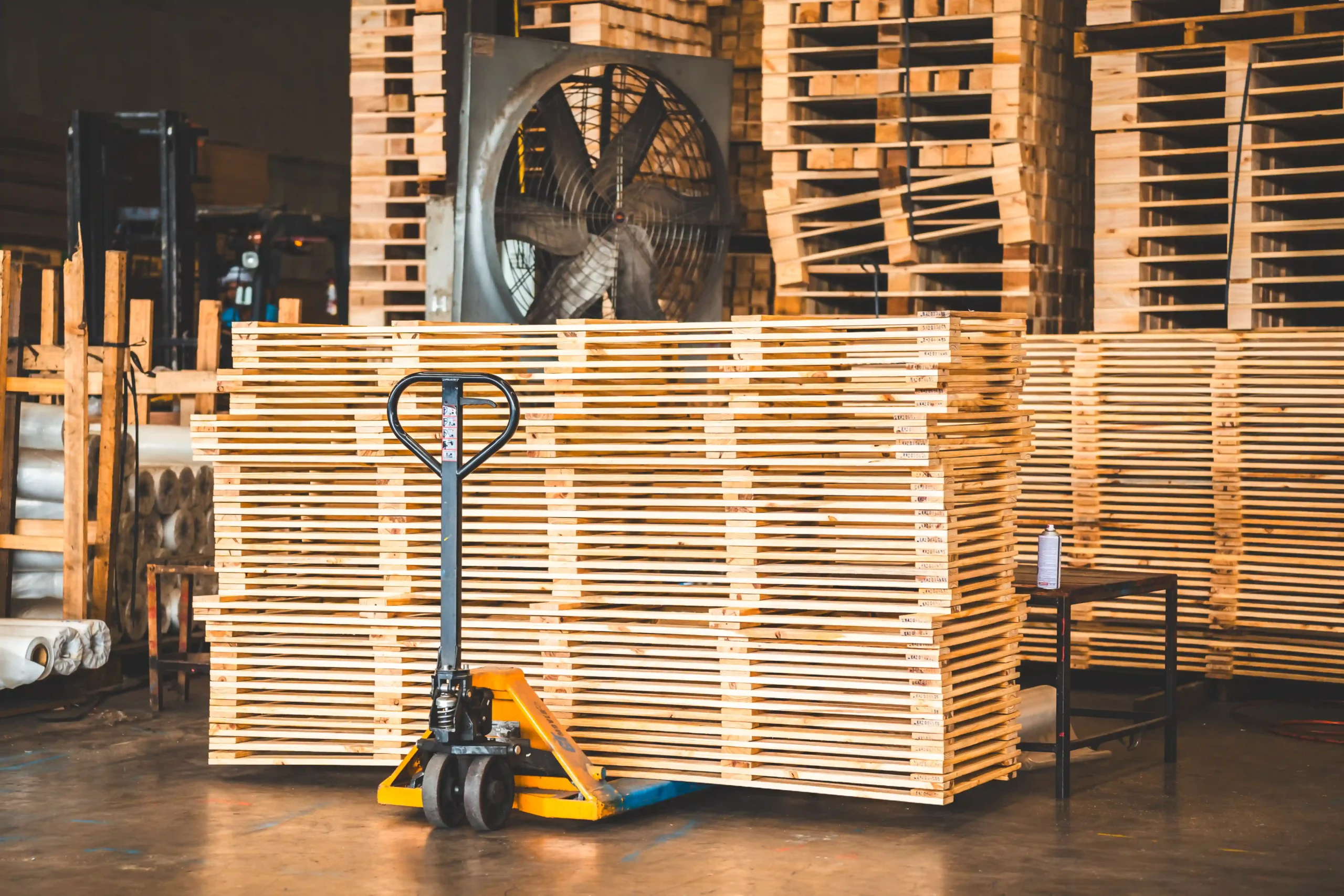A pallet unit is a standardized platform used to hold and transport goods in bulk, usually stacked in cases or boxes. It forms the foundation of a “unit load,” streamlining how products are handled, stored, and moved.
In simple terms, it’s the physical structure that helps us group multiple items into a single moveable unit. Whether we’re working with consumer electronics or pharmaceuticals, pallet units keep everything organized and secure — saving time, labor, and space across every step of the supply chain.
At Tri-Link FTZ, pallet units are part of our everyday operation. They’re not just tools — they’re essential to how we reduce handling costs, minimize product damage, and increase throughput for our clients in global trade.

Not all pallet units are created equal, and that’s where things get interesting. Depending on the region, product type, or warehouse system, the dimensions and material of a pallet can drastically affect operations.
For instance, a Euro pallet (1200mm x 800mm) is common across Europe, while a GMA pallet (48in x 40in) is the North American go-to. But beyond size, the load capacity and the material — whether it’s wood, plastic, or metal — also determine how much stress the pallet can take and how long it lasts.
In our operations, we often recommend plastic pallets for industries requiring hygiene and durability, like food and pharma, and wooden pallets for general freight. Matching the right pallet unit to the right job is something we’ve done for decades — and it’s one of the reasons we’re trusted by clients worldwide. Read more here.
Many people use the terms pallet unit and unit load interchangeably — but they aren’t quite the same. A pallet unit refers to the physical base: the wooden or plastic platform that holds items.
A unit load, on the other hand, is the full collection of goods being shipped as one item, which often includes a pallet but can also involve totes, boxes, or shrink-wrapped stacks. In our facility, we regularly work with clients who assume every palletized shipment is a unit load.
But when you’re dealing with automated systems, warehouse management software (WMS), and inbound customs processing, the distinction matters. Knowing when to treat a pallet as part of a larger configuration vs. a standalone unit load can save hours of coordination — and in some cases, thousands in shipping inefficiencies.
Different products require different handling approaches. A fragile electronics shipment won’t sit well on a heavy-duty block pallet designed for automotive parts.
That’s why choosing the right pallet unit is more than a technical decision — it’s a strategic one. For high-volume, lightweight goods, stringer pallets may offer a better balance between cost and efficiency.
For pharmaceutical supplies, we often rely on moisture-resistant plastic pallets that don’t splinter and can be sanitized easily. At Tri-Link FTZ, we take time to assess each client’s product type, turnover rate, and packaging style.
This allows us to customize pallet unit configurations that prevent overhang, protect fragile packaging, and optimize space in our racking systems. It’s a small detail that makes a huge impact on performance.

When you scale warehouse operations, even the most minor decisions can create massive ripple effects. The choice of pallet unit directly impacts how products fit into racks, move through conveyor systems, and get loaded onto trucks or containers.
We’ve seen clients go from frequent load shifting and product damage to smooth, optimized outbound flows — just by standardizing their pallet units. In transportation, every inch counts.
A poorly configured pallet might cost the same to ship but carry fewer goods. That’s what we call “shipping air,” and we work hard to avoid it.
By tracking standard pallet sizes and encouraging full-load shipping wherever possible, we help clients cut down on freight costs and carbon emissions all in one move.
Over the years, we’ve developed some clear best practices. First, never overlook your inner pack configuration — how many units per case and cases per pallet.
Second, always map your SKUs to the ideal pallet type. And third, invest in reusables if your supply chain can support a closed loop. These are the kinds of strategies we use with every client at Tri-Link FTZ.
Looking ahead, we’re excited about innovations like smart pallets that can track location and temperature in real time, and sustainable pallet materials that reduce waste without sacrificing strength. As tech continues to evolve, so will the way we think about the pallet unit — not just as a base, but as a smart, dynamic component of the entire logistics puzzle. Read more here.
At Tri-Link FTZ, we’ve been helping businesses move smarter for more than three decades. We’ve seen firsthand how the right pallet unit can be the silent hero of the supply chain — boosting speed, cutting costs, and making warehouse operations hum.
Whether you’re running a tight urban distribution center or managing overseas trade from a Foreign Trade Zone, don’t underestimate the power of getting your pallets right. Want help optimizing your warehouse or choosing the right pallet unit for your operations?
Contact us today — let’s build a smarter, stronger supply chain together.
Share this article
We have other resources available upon request as well as one-on-one support and personalized answers, just like our services.
Simply contact us anytime and we’ll get back to you to answer your questions and provide meaningful answers that show you how Tri-Link supports your logistics, reduces costs, and accelerates efficiency.
Tri-Link delivers exceptional FTZ and 3PL services tailored to your global trade needs.
Our solutions combine innovation, quality, and efficiency to exceed your expectations and meet your specific requirements.